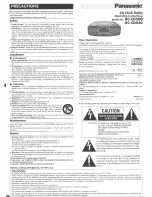
E
n
g
li
s
h
ALLSOUND III
5
ALLNET GmbH © 2009 –
www.allnet.de
1.2 The power adapter socket
Plug in the supplied power adapter in here.
1.3 WLAN antenna connector
If you have access to a wireless LAN (WLAN), screw the
included antenna onto this connector.
If possible, please ensure that the antenna is set to a
vertical position to ensure the best possible reception.
1.4 The network port
Use this port if you would like to integrate the ALLSOUND
III into your network via a wired connection. To distinguish
it from the wireless or WLAN connection, it is frequently
referred to as a LAN or Ethernet port. The port supports
data rates of 10 and 100 Mbps. To connect the
ALLSOUND III to your router in this manner, use a
standard network cable (twisted pair with RJ45 plugs). To
connect it “directly” to your desktop PC or laptop, either use a network switch or a hub. To
connect the ALLSOUND III without any intermediate devices, use a crossover cable
instead of a standard network cable.
Two LEDs near the port show the status of the
link
: (
orange
) indicates a live connection
to the juncture / node; network
traffic
is signaled by a (
green
) LED (usually flickering).
1.5 The USB port
You can use this USB master port for connecting USB
mass storage media, like external hard disks. The
ALLSOUND III supports USB 1.x and USB2.0 storage
devices. Please note that not all USB devices can be used
on this port. Keyboards and mice are not supported, nor are
external MP3 storage devices with additional functions
(USB hub, data encryption, etc.). Some MP3 players encrypt the files stored on them and
thus unfortunately also cannot be read.






































